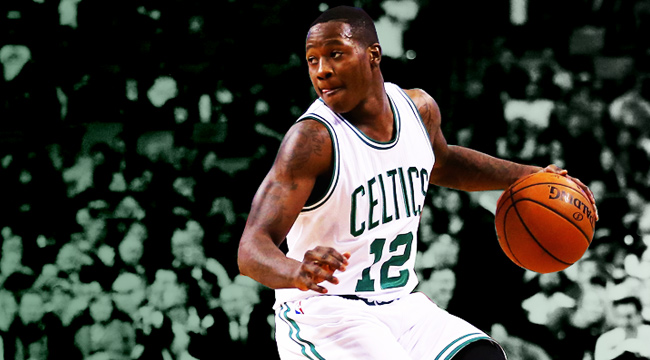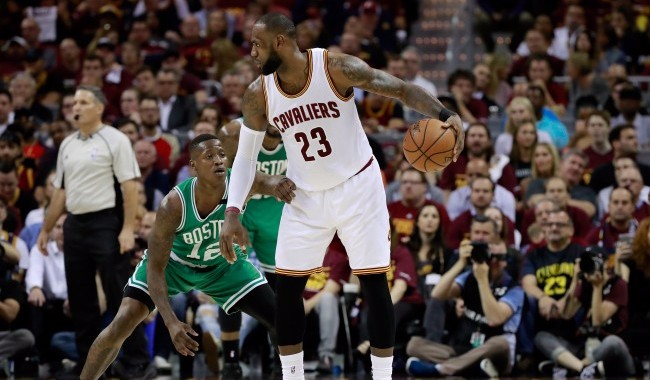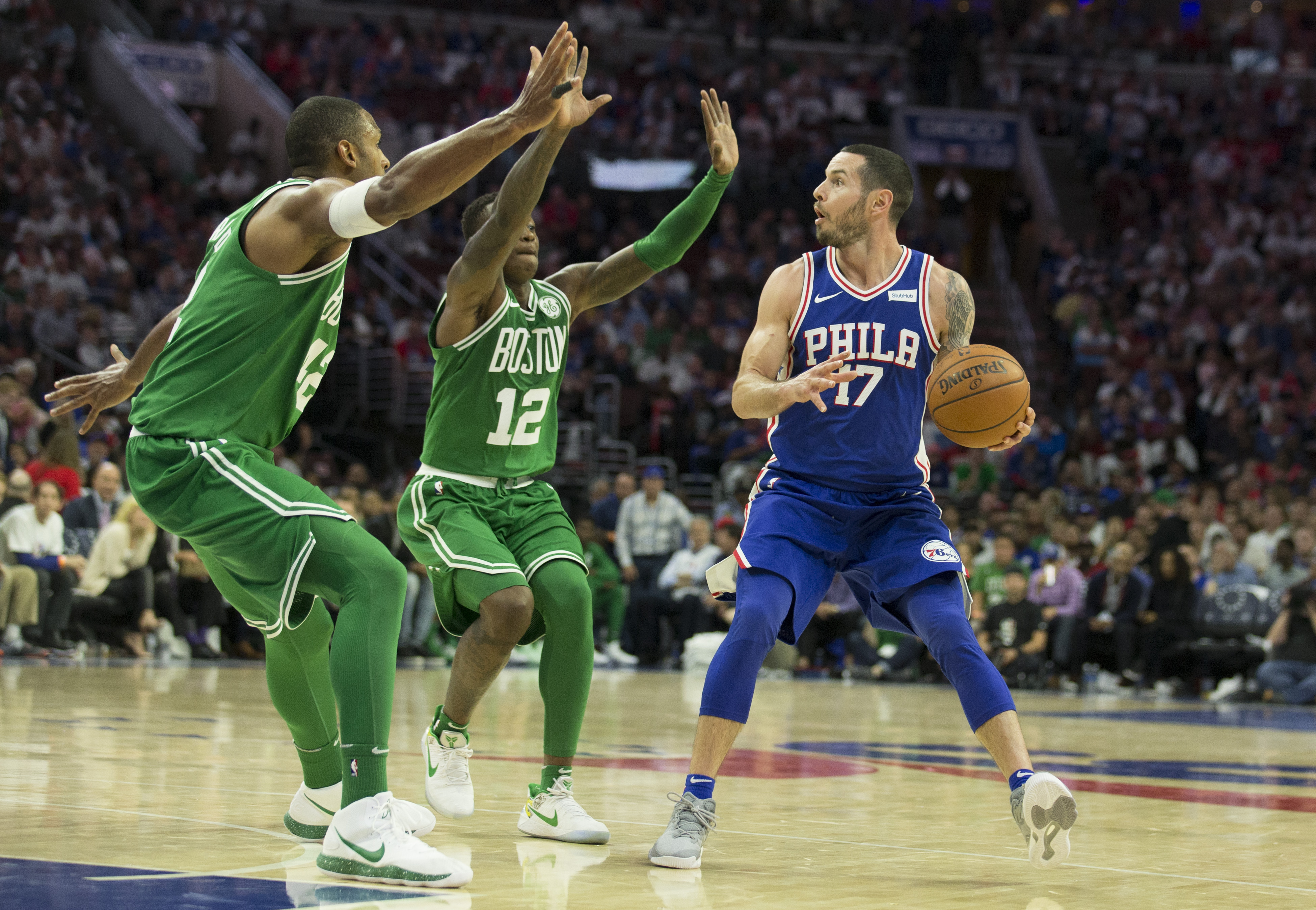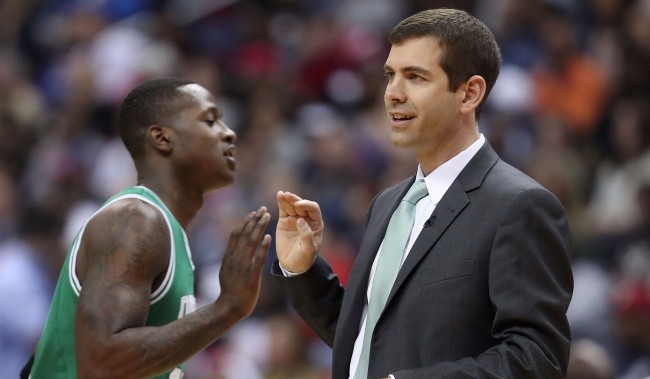
BROOKLYN – Terry Rozier saw all of the jokes. The Celtics almost traded for Jimmy Butler, but they refused to part with Terry Rozier! The Celtics almost traded for Paul George, but they refused to part with Terry Rozier! The Celtics almost traded for LeBron James and Kevin Durant AND Anthony Davis, but they refused to part with Terry Rozier!
“I tried not to read into it but it’s hard not to see it,” Rozier says. “It’s like, everywhere. But I’m with it. I’m all for it. I’m happy to be here. I haven’t got traded. This is a special place and I’m just happy to be part of this organization. I’m still here. I hope I’m here to stay.”
Rozier is indeed still in Boston despite the endless barrage of trade rumors over the last few seasons, and despite his name being thrown into the mix while the Celtics were reportedly close to deals for every conceivable star player. They signed one (Gordon Hayward) and traded for another (Kyrie Irving) during the 2017 offseason, but Rozier was left standing. He’s taken on a larger role with this version of the Celtics — something that was likely to happen even before Hayward’s traumatic season-ending injury a few minutes into the first game of the year — and his play is, if not justifying the ridiculous hyperbole of supposedly shot-down trades, at least making the Celtics look pretty smart for hanging onto him.
Typically the first or second man off the bench for Brad Stevens, Rozier is posting career-best figures in a number of categories. If he ever starts making shots, he’ll push himself into the ranks of the best bench sparkplugs in the league. As it is, he’s nudged himself into positive territory in several advanced metrics (Value Over Replacement Player, Box Plus-Mins, Real Plus-Minus, Win Shares Per 48 Minutes), a major leap forward considering he was sub-replacement level as a rookie and still below-average last year. He leads the whole damn league in defensive rating this season, according to Basketball-Reference.
Rozier is pressuring the ball like crazy. Bite-sized lineups with him and 5-foot-10 Shane Larkin in the backcourt should theoretically get torn apart by NBA-sized guards, but the two of them have just been relentless in picking up for as much of the full 94 feet as possible while they’re out there together. Teams have scored a pathetic 84.6 points per 100 possessions against that duo in 102 minutes this season, per NBA.com, and they just provided an example on Tuesday night of how they can combine to swing a game.

Early in the fourth quarter against the Nets on Tuesday, Stevens turned to the mighty mites, and they pushed the Celtics’ lead from three to 11 points in just north of two minutes, forcing two turnovers and a shot clock violation with their pressure.
“Just heart and effort,” Rozier says. “Shane’s gonna pick his man up full court. We’re gonna try and make them pick up the pace and make them play fast. And we play hard no matter who we got on the floor.”
Rozier himself is darting in and out of passing lanes like a madman, leaping into in the top-10 in steal rate among regular bench players.
“On the ball defense, I’m pretty good. I can get steals that way,” he says. “But passing lanes, I’ve been doing since forever. Since I was in middle school. You’re just reading them. The bigs, they, you know, they’re looking so much — they’re just telegraphing it. You just act like you’re just dead on a play, then you just take off. My first two steps are pretty quick, so I can have space and I can just take off and steal the ball.”
Playing football as a child helped Rozier with his change of direction and reaction time, but Rozier says his ability to read a passer’s body language is what really drives his willingness to jump a passing route.
“I don’t really so much look at their eyes,” he says. “I just know that they’re getting right to that point where they just want to get it to the point guard. And he tries to get it to him, and I’m just there.”

The major revelation this year, however, is Rozier’s rebounding. He’s listed by the Celtics at 6-foot-2, but he measured south of 6-foot-1 at the NBA combine in 2015. Despite that fact, Rozier has corralled the board on 19 percent of opponents’ missed shots while on the floor—tied for third-best rate on the team with 6-foot-10 center Aron Baynes. Even more impressive, that 19 percent defensive rebound rate is the single best mark in the history of professional basketball for any player listed at 6-foot-2 or shorter. (After coming within 0.3 percent of the record last year, he is smashing it to pieces this season.)
He’s going so hard on the glass that he says the team’s big men have begun needling him about it.
“I leave my man,” he says, before acknowledging the obvious. “It’s kinda risky but I always leave my man. I just go get the board. I went back and forth with our big men, just joking around because I steal their rebounds a lot. But I’m just trying to help. They know. They go, Terry Rozier steals rebounds.”
As for how he manages to get the ball off the glass so often, Rozier says credits a combination of factors.
“When I grew up, at the park, I was the smallest guy. And it’s everybody for themselves, so I had to get my own rebounds,” he says. “It still applies to today’s game. I’m just going in there trying to beat everybody to the ball. I got a knack for rebounds. I just look and I know where it’s gonna bounce off, so I can get to it before anybody else.”

That preternatural sense of where the ball is going and the ability to track it down ahead of other guards is a skill Stevens admits the Celtics prioritized in building out their team.
“I think that, obviously, the way that the game is played, you’re guarding four shooters a lot of the time,” Stevens says. “Being able to rebound long rebounds and being able to rebound over the top is really important, we think.”
Rozier has certainly done that, aided by his instincts, his timing, his 6-foot-8.5-inch wingspan, and his 38-inch vertical. He’s not the greatest driving factor in the Celtics exceeding all reasonable post-Hayward-injury expectations, but he’s one of them.
For a player that prior to this season was largely known for his team’s seemingly-insane unwillingness to trade him for anybody, that’s a major step forward.






